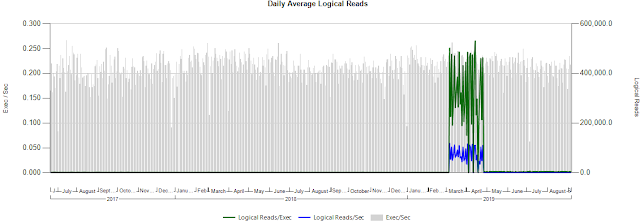--string with repeating characters to remove
DECLARE @String VARCHAR(1000) = 'My qqquery was bad qquality and returned data with randomly repeating qq letters and so we needed a way to reduce multiple qqqq''s to a single qqqqqqqqqqq.';
--repeating character to remove
DECLARE @TrimCharacter VARCHAR(1) = 'q';
SELECT
@String AS OriginalString
,REPLACE(@String,@TrimCharacter,'<>') AS FirstReplace
,REPLACE(REPLACE(@String,@TrimCharacter,'<>'),'><','') AS SecondReplace
,REPLACE(REPLACE(REPLACE(@String,@TrimCharacter,'<>'),'><',''),'<>',@TrimCharacter) AS FinalResult;
ORIGINAL STRING – Green highlights of all 'q' letters
My qqquery was bad qquality
and returned data with randomly repeating qq letters and so we needed a way to reduce multiple
qqqq's to a single qqqqqqqqqqq.
FIRST INNER REPLACE – Replaces each 'q' (green above) with '<>'
My <><><>uery was bad <><>uality and
returned data with randomly repeating <><> letters and so we needed a way to
reduce multiple <><><><>'s
to a single <><><><><><><><><><><>.
SECOND MIDDLE REPLACE – Replaces each '><' (yellow above) with empty string
My <>uery was bad <>uality and returned data with randomly repeating <>
letters and so we needed a way to reduce multiple <>'s to a single <>.
THIRD OUTER REPLACE - Replaces each remaining '<>' (aqua above) with a 'q'
My query was bad quality and returned data
with randomly repeating q letters and so we needed a way to reduce multiple q's
to a single q.
If the string happens to contain either '<' or '>' the solution would need to be modified so as to avoid the conflicts. Instead of '<>' a generic solution can use the unprintable characters: CHAR(17)+CHAR(18)
REPLACE(REPLACE(REPLACE(@String,@TrimCharacter,CHAR(17)+CHAR(18)),CHAR(18)+CHAR(17),''),CHAR(17)+CHAR(18),@TrimCharacter) AS FinalResult























